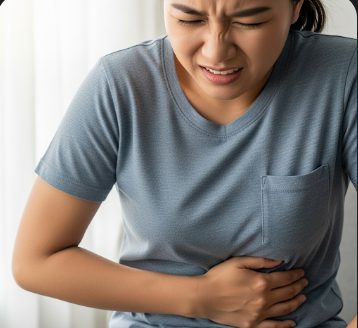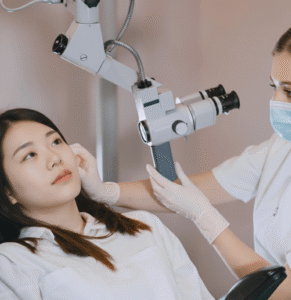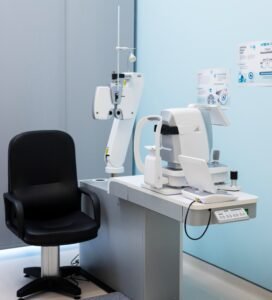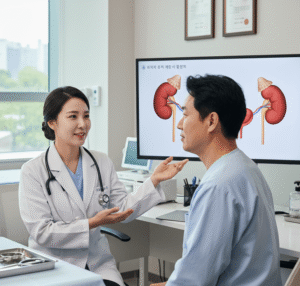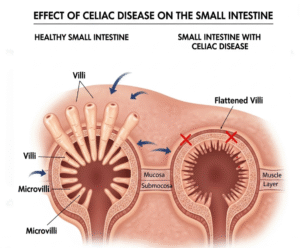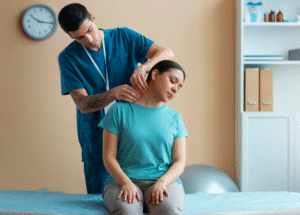Overview
Gallbladder pain is a significant health concern that often appears as sharp or dull discomfort in the upper right abdomen, just beneath the rib cage. The gallbladder is a small pear-shaped organ situated below the liver, responsible for storing and releasing bile that helps in digesting fats. When the gallbladder becomes inflamed, blocked, or affected by gallstones, pain usually develops.
In some cases, gallbladder pain is temporary and mild, but it can also become severe and persistent, indicating more serious conditions such as gallstones, gallbladder infection, or bile duct obstruction. Understanding the nature, causes, and treatment options for gallbladder pain is essential for preventing long-term complications and ensuring proper health care.
Key Facts
➲ The gallbladder stores bile and supports the digestion of fats.
➲ Pain typically occurs in the upper right abdomen and may spread to the back or shoulder.
➲ Common triggers include gallstones, inflammation, or bile duct blockages.
➲ Pain often develops after consuming fatty or greasy meals.
➲ Long-term untreated pain can lead to serious complications.
➲ Korea offers world-class laparoscopic and robotic gallbladder surgeries with quick recovery times.
What is Gallbladder Pain?
Gallbladder pain refers to abdominal discomfort arising from issues within the gallbladder or bile ducts. The pain is often described as biliary colic, a sharp and intense pain caused when gallstones temporarily block the bile duct.
This pain differs from regular stomach pain because it is highly localized in the right upper quadrant and often radiates to the shoulder or back. It can last from a few minutes to several hours and tends to worsen after heavy meals. Chronic gallbladder pain can significantly reduce quality of life and requires timely diagnosis.
What Symptoms Are Related to Gallbladder Pain?
Gallbladder pain rarely comes alone — it is often accompanied by other symptoms that provide clues to the underlying cause.
➲ Persistent or sharp pain in the upper right abdomen.
➲ Pain radiating to the shoulder blade or back.
➲ Nausea and frequent vomiting.
➲ Indigestion and bloating after eating fatty foods.
➲ Fever, chills, and sweating (often due to infection).
➲ Yellowing of the skin and eyes (jaundice) if bile flow is blocked.
➲ Dark urine or clay-colored stools.
What Causes / Possible Causes
Several conditions can trigger gallbladder pain, with gallstones being the most common cause.
1. Gallstones (Cholelithiasis)
➲ Solid deposits formed from cholesterol or bile salts.
➲ They can block bile ducts, causing sudden and severe pain.
2. Gallbladder Inflammation (Cholecystitis)
➲ Usually caused by gallstones or infection.
➲ Leads to persistent abdominal pain, fever, and tenderness.
3. Bile Duct Blockages
➲ Stones or narrowing (strictures) can obstruct bile flow.
➲ May result in severe pain, jaundice, and infection.
4. Biliary Dyskinesia
➲ A functional problem where the gallbladder does not empty properly.
➲ Causes chronic discomfort without visible stones.
5. Infections or Tumors
➲ Bacterial infections or rare cases of gallbladder cancer can cause long-term pain.
When Should I See My Doctor?
Gallbladder pain should not be ignored, as it often indicates underlying problems that can worsen over time.
Seek medical help if:
➲ Pain lasts longer than a few hours or keeps returning.
➲ Pain is intense and prevents daily activities.
➲ You experience nausea, vomiting, fever, or chills.
➲ Jaundice (yellow skin/eyes) or sudden dark urine appears.
➲ Abdominal tenderness worsens with pressure.
Emergency attention is needed if gallbladder pain is accompanied by severe weakness, confusion, difficulty breathing, or spreading pain, as these may signal a life-threatening complication.
Care and Treatment
Treatment varies depending on the cause and severity of the pain.
Lifestyle and Self-care
➲ Avoid fatty, greasy, or fried foods.
➲ Eat smaller, balanced meals to ease digestion.
➲ Maintain a healthy weight to reduce risk of gallstones.
➲ Stay hydrated and physically active.
Medical Care
➲ Pain relievers and anti-inflammatory drugs to manage discomfort.
➲ Antibiotics if infection is present.
➲ Oral medications to dissolve small gallstones (less common).
Surgical Options
➲ Laparoscopic Cholecystectomy – The most common and minimally invasive gallbladder removal.
➲ Open Surgery – Used for severe complications when laparoscopy isn’t possible.
Treatment Options in Korea
South Korea is globally recognized for its advanced medical facilities, skilled surgeons, and cutting-edge technology in gastrointestinal care. Patients experiencing gallbladder pain can find comprehensive care in Korean hospitals, with options ranging from early diagnosis to advanced surgical treatments.
Diagnosis in Korea
➲ High-resolution ultrasound and CT scans.
➲ Endoscopic retrograde cholangiopancreatography (ERCP) for duct examination.
➲ Advanced blood tests for liver and bile function.
Medical Treatments in Korea
➲ Non-surgical management with antibiotics and pain relievers.
➲ Oral therapies for small stones in selected patients.
Surgical and Advanced Therapies
➲ Laparoscopic Gallbladder Surgery – Widely available with minimal scarring and short hospital stays.
➲ Robotic Surgery (Da Vinci System) – Provides high precision and faster recovery.
➲ Endoscopic Stone Removal – Non-surgical stone extraction for patients unsuitable for surgery.
Rehabilitation and Support
➲ Short recovery times, with most patients discharged within 1–2 days.
➲ Nutritional guidance to adapt after gallbladder removal.
➲ Digital follow-up care offered by many Korean hospitals.

